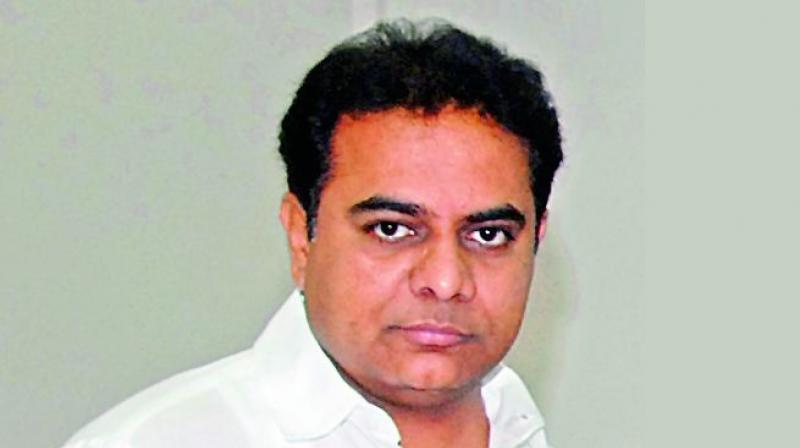Kirloskar report not practical: KT Rama Rao

Hyderabad: Minister K.T. Rama Rao said that the removal of illegal encroachments on stormwater drains (nalas) in the city, as had been recommended by the Kirloskar Committee after the floods in Hyderabad in the year 2000, was impractical. While replying during the Question Hour in the Assembly, Mr Rao said that for the recommendations of the Kirloskar Committee to be implemented, the government would have to demolish about 28,000 buildings, for which it would have to pay a total of Rs 12,000 crore in the form of compensation. He said that the committee had recommended that nalas should be widened to 60 feet at some points and 40 or 48 feet at others. It had also recommended the maintenance of a nine-metre buffer zone around the nalas.
“In a concrete jungle like Hyderabad, is it possible to adhere to such norms? I have gone through this report and found it to be impractical in the current circumstances,” Mr Rao said. He said that the government had instead identified 1,000 major structures, which were obstructing the flow of flood waters, to be demolished in order to avoid floods.
“We have sanctioned Rs 230 crore to clear these encroachments. Nearly 400 structures have already been razed and the remaining will be demolished in the next three months. The works will be completed by March, much before the onset of the monsoon in June,” he said. He said that people holding land pattas whose houses and lands were affected by this move would be offered compensation as well as homes in the government’s 2BHK housing scheme.
“For the first time, the GHMC has taken up the annual maintenance of nalas to remove silt. 43.61 lakh cubic metres of silt was removed last year, and around 75 lakh cubic metres of silt has been removed this year to ensure the smooth flow of drain water. There has been a 186 percent increase in the de-siltation of nalas through the introduction of mechanisation,” he said.
Mr Rao said that despite there being about 9,000 km of road within the GHMC limits, there was only 1,221 km of stormwater drains, which was the cause of stagnation of water in various localities during the rains. “We have identified 13 chronic water-stagnation points, and action has been initiated to rectify them. 346 points prone to water stagnation have been identified and efforts are underway to rectify them at a cost of Rs 121.5 crore by the next monsoon,” he said.

